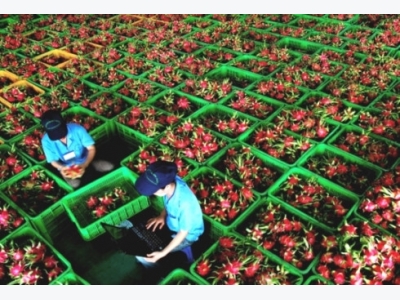Do free trade agreements really create prosperity in Vietnam?

A debate has raged for several decades about the real benefit of free trade agreements and whether they create prosperity for Vietnam, said experts from the Ministry of Industry and Trade at a forum late last month in Hanoi.
Mr Linh, an expert from the Department of Asia-Pacific Market, said now that Vietnam has fulfilled most of its commitments under the Agreement the country is in an appropriate position to assess the contribution of the FTA to its wealth.
On February 27, 2009, ASEAN (Vietnam, Indonesia, Laos, Cambodia, Thailand, Philippines, Malaysia, Singapore, Myanmar and Brunei) signed its biggest trade pact with Australia and New Zealand.
Under the Agreement, Vietnam committed to allow 100% Australian invested entities to operate in the country in respect of higher education, adult education and other education services, including foreign language training and expand fields of study that Australian education providers may choose to provide.
It also reduced the experience requirement to three years for Australian teachers in Vietnam in the following education services – higher secondary education; technical and vocational secondary education; and foreign language training.
As it relates to road transport services, effective January 1, 2010, the Agreement allowed Australian joint venture stakeholders to increase their ownership interest from a noncontrolling 49% to a controlling 51%.
With respect to dairy products, Vietnam committed to progressively reduce tariffs on many Australian dairy products such as milk, butter, whey and yoghurt, by 5% every year, starting in 2010.
It was agreed that tariffs on milk, milk powder, butter and cheese would be eliminated in 2016 and 2017.
For live animals and meat, the tariff on exports to Vietnam was completely wiped out upon the agreement coming into force, which was January 1, 2010. Other Australian live animals exported to Vietnam were subject to 5% tariffs, which were to be abolished in 2016.
The tariffs of 20% on beef and 30% on pork from Australia were to be phased out initially by 15% and 25%, respectively, in the first year and by approximately 5% every year until they reached zero.
A similar scenario followed for Australian lamb, fruits and juices, with tariffs completely removed by 2016. Wine was an exception with the tariffs on Australian wine remaining at 80% and reduced in one fell swoop to 20% in 2022.
Nguyen Phuc Nam, deputy head of the Department of Asia-Pacific Market, continued to note that in 2009 exports from Vietnam to Australia were US$2.3 billion, which increased 126% to US$2.9 billion in 2016.
The relatively small increase of US$.6 billion in total sales speaks volumes and shows that at least at this point in time the Agreement has added little to the fortunes of the country in terms of exports and earnings.
At a 5% profit ratio, the total sales figure would equate to only meagre earnings of roughly US$30 million per annum— far off the mark that what was originally expected when the Agreement came into force.
The opportunity to improve the performance of the economy for exports has been missed so far, said Mr Nam: To date we have simply reduced barriers to the Australia and New Zealand markets and gained access but capitalized very little.
What we have learned is that when, as a country, we fail to properly structure our market-openings brought about by FTAs, we forego the major benefit from the negotiations and don’t enable the country to produce more, generate more sales and in turn earnings.
Consequently, we are forced to conclude that FTAs in and of themselves, like this Agreement, do little to boost the competitiveness of the country’s workforces and private sector in the export arena.
We need to learn from these lessons and do much more to close the gap between rhetoric and reality and ensure that the FTAs the government enters do in fact create prosperity that results in an improved standard of living for Vietnamese citizens.
Có thể bạn quan tâm
Phần mềm

Phối trộn thức ăn chăn nuôi

Pha dung dịch thủy canh

Định mức cho tôm ăn

Phối trộn phân bón NPK

Xác định tỷ lệ tôm sống

Chuyển đổi đơn vị phân bón

Xác định công suất sục khí

Chuyển đổi đơn vị tôm

Tính diện tích nhà kính

Tính thể tích ao hồ



 Phillippines’ Aboitiz Equity Ventures acquires VN’s Eurofeed
Phillippines’ Aboitiz Equity Ventures acquires VN’s Eurofeed  Mekong Delta struggles to save summer autumn rice
Mekong Delta struggles to save summer autumn rice